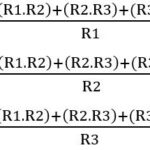Radio Resource Control (RRC) signaling in 5G (Fifth Generation) networks is a critical component responsible for managing the establishment, maintenance, and release of radio resources between User Equipment (UE) and the network. RRC signaling plays a central role in controlling the connection between the UE and the gNodeB (base station) to ensure efficient communication. Let’s explore the detailed role of RRC signaling in 5G:
- Connection Establishment:
- RRC signaling is involved in the process of establishing a connection between the UE and the gNodeB. This includes procedures such as random access, where the UE initiates communication with the network, and the establishment of the Initial Radio Bearer.
- Bearer Management:
- RRC signaling manages the establishment, modification, and release of Radio Bearers, which are logical channels dedicated to data transmission between the UE and the network.
- Different types of bearers may be established to accommodate diverse services and applications, each with specific QoS (Quality of Service) requirements.
- Mobility Management:
- RRC signaling is responsible for mobility management, ensuring seamless handovers between cells or gNodeBs as the UE moves within the network.
- Handover procedures involve signaling exchanges between the UE and the network to transfer the radio connection smoothly, maintaining continuity of service.
- Power Control:
- RRC signaling includes mechanisms for power control, optimizing the transmission power of the UE based on the network conditions. This ensures efficient use of radio resources and minimizes interference.
- Security Procedures:
- RRC signaling incorporates security procedures to establish a secure communication link between the UE and the network. This involves authentication and key establishment to prevent unauthorized access and protect user data.
- UE Capability Negotiation:
- RRC signaling facilitates the negotiation of capabilities between the UE and the network, allowing both entities to agree on supported features and functionalities.
- This capability negotiation ensures that the network can adapt its services based on the capabilities of the UE, optimizing the overall communication experience.
- Connection Reconfiguration:
- RRC signaling handles connection reconfiguration when there are changes in the network conditions or service requirements. This includes modifying existing bearers or introducing new bearers to accommodate different types of traffic.
- Idle Mode and Dormancy:
- In scenarios where the UE is not actively communicating, RRC signaling manages the transition to idle mode or dormancy to conserve energy. During idle periods, the UE monitors control channels periodically to remain synchronized with the network.
- Measurement and Reporting:
- RRC signaling involves mechanisms for measuring the radio conditions and reporting these measurements to the network. This information is crucial for decision-making processes, such as handovers and beamforming.
- Release of Resources:
- When a communication session concludes or when the network determines that resources are no longer needed, RRC signaling initiates the release of radio resources, freeing up capacity for other users or services.
Understanding and efficiently managing RRC signaling is essential for optimizing the performance, reliability, and resource utilization in 5G networks. The signaling procedures orchestrated by RRC contribute to the dynamic and adaptive nature of 5G communication, ensuring that resources are allocated based on real-time network conditions and user requirements.
